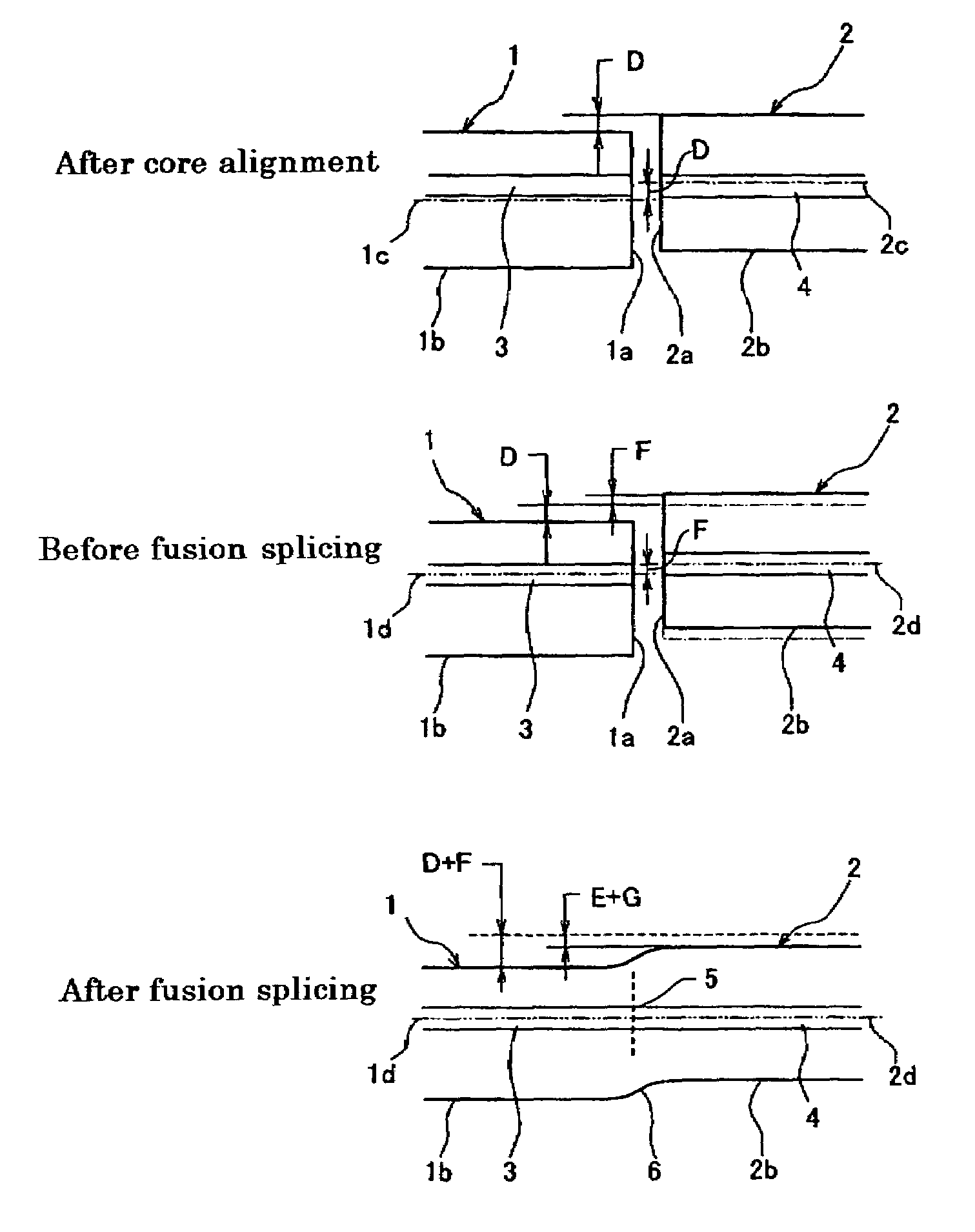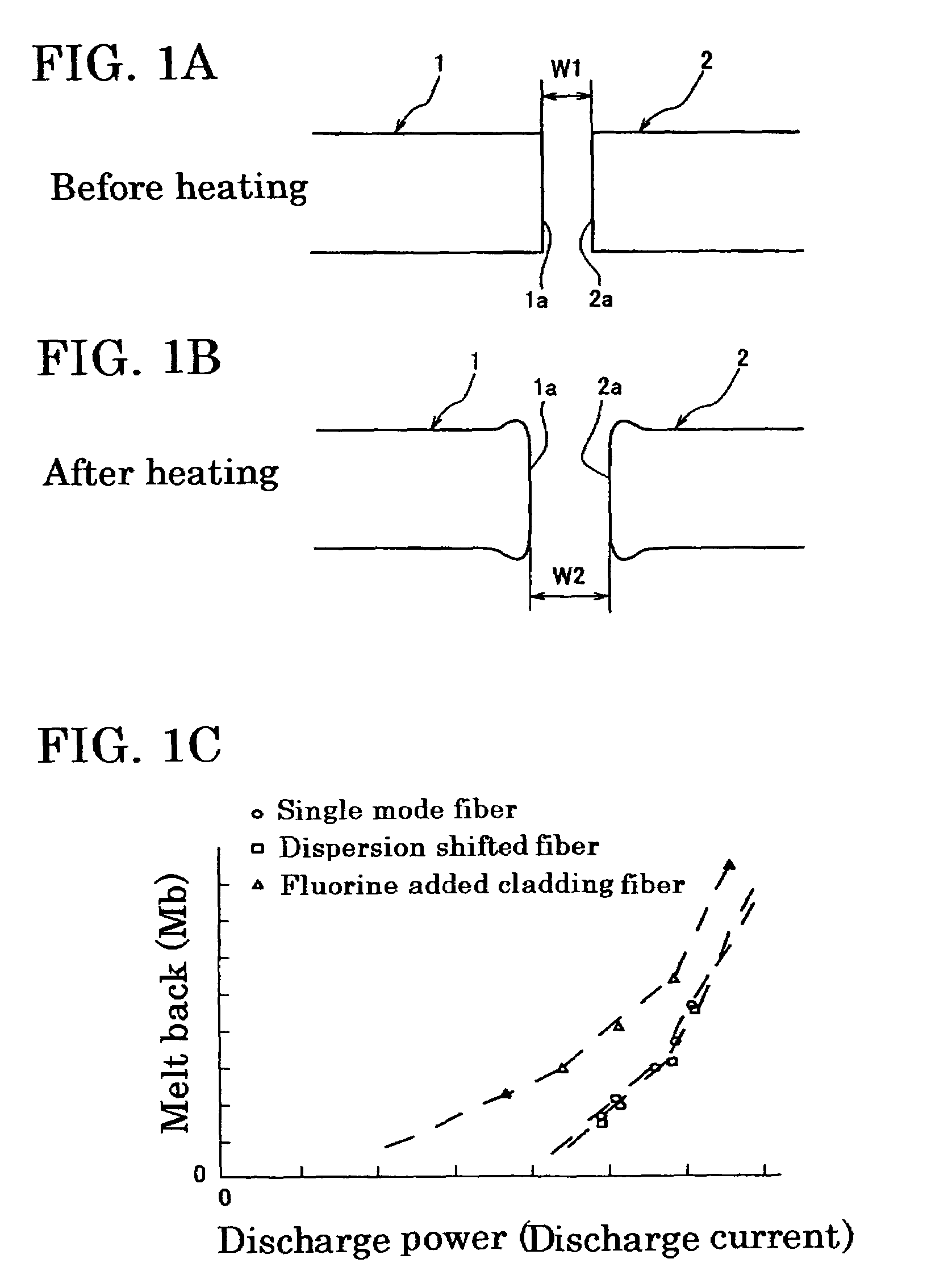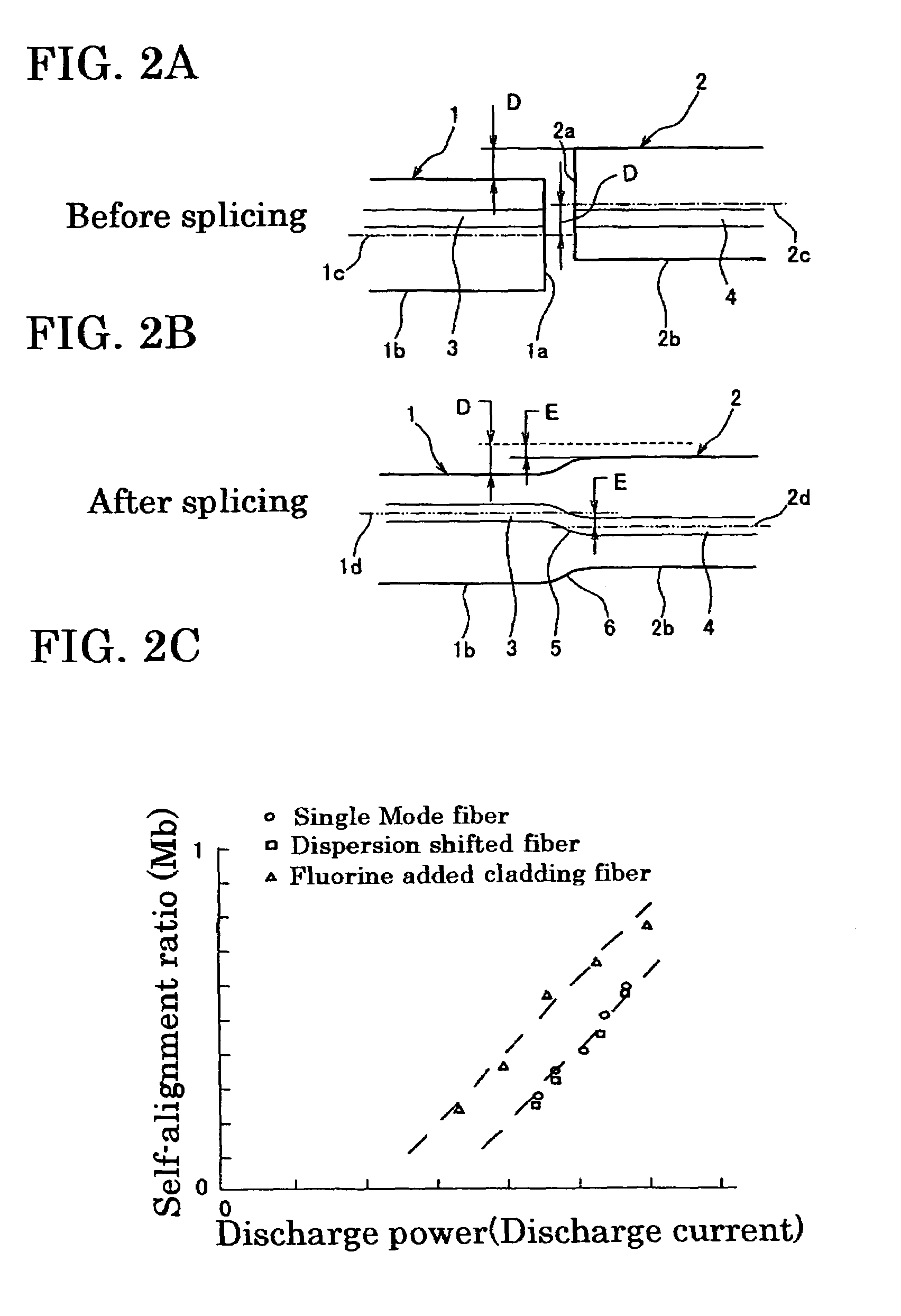Method for fusion splicing optical fibers and fusion splicer
a technology of which is applied in the field of fusion splicing optical fibers and fusion splicers, can solve the problems of uniform self-alignment value of optical fibers, difficult to set intentional offset to compensate for self-alignment value, and worker ignorance of optical fiber typ
- Summary
- Abstract
- Description
- Claims
- Application Information
AI Technical Summary
Benefits of technology
Problems solved by technology
Method used
Image
Examples
Embodiment Construction
[0022]In performing the offset compensation of optical fibers to be fusion spliced, it is necessary to know the melting characteristics of the optical fiber. The melting characteristics include the relationship between melted condition value (e.g., melt back) of an optical fiber optical fiber and discharge power, and the relationship between self-alignment ratio of an optical fiber and discharge power. By obtaining these relations in advance of fusion splicing, it is possible to carry out axial offset compensation appropriately, allowing fusion splicing to be performed with a prescribed splicing loss.
[0023]FIGS. 1A and 1B are schematic diagrams describing melt back, where FIG. 1A shows the condition before test discharge, and FIG. 2B shows the condition after test discharge. In FIG. 1A, the first optical fiber 1 and second optical fiber 2 are in an abutting arrangement, with a gap W1 provided between the splicing ends 1a and 2a. When test discharge is carried out, the splicing ends ...
PUM
| Property | Measurement | Unit |
|---|---|---|
| surface tension | aaaaa | aaaaa |
| discharge current | aaaaa | aaaaa |
| time | aaaaa | aaaaa |
Abstract
Description
Claims
Application Information
 Login to View More
Login to View More - R&D
- Intellectual Property
- Life Sciences
- Materials
- Tech Scout
- Unparalleled Data Quality
- Higher Quality Content
- 60% Fewer Hallucinations
Browse by: Latest US Patents, China's latest patents, Technical Efficacy Thesaurus, Application Domain, Technology Topic, Popular Technical Reports.
© 2025 PatSnap. All rights reserved.Legal|Privacy policy|Modern Slavery Act Transparency Statement|Sitemap|About US| Contact US: help@patsnap.com



